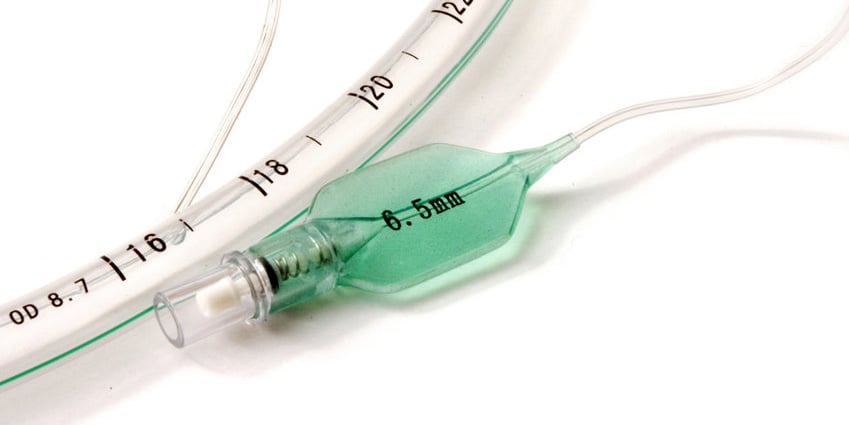
Difficult to precisely define and encompassing a wide range of situations, medical errors nevertheless can be devastatingly costly patients and to health care providers. Protecting against these mistakes is expensive, as well, with the value of the medical malpractice insurance market estimated by some to be over $17 billion and premiums increasing rapidly in recent years.
At SSCOR, our goal is to manufacture dependable, consistent suctioning equipment and accessories to aid providers in suctioning airways, a delicate procedure which, if performed incorrectly, can lead to further patient injury or trauma. Read on for some tips on the proper use of equipment, technique guides, training information and more — all of which we hope help reduce your risk for medical error.
Suctioning Guidance
Managing airways that require suctioning — whether to remove obstructions or fluids or to prepare the airway for an intubation — often comes to balancing the urgency of an emergency that may be affecting a patient’s breathing with the care necessary to perform the procedure without inflicting harm.
These are key points for safe suctioning:
- Focus on visibility: You must be able to clearly see the upper airway and oral cavity before suctioning. Be mindful of dental structures that may need to be removed, such as dentures.
- Protect against hypoxia: Hyperoxygenate patients before suctioning to ensure patients have enough oxygen when the catheter is in the airway. Additionally, suctioning should only take five to eight seconds — and never last longer than 10 seconds. Keep supplemental oxygen nearby for any signs of hypoxia.
- Avoid trauma: Certain populations are more vulnerable to suctioning trauma, including geriatric and pediatric patients. Responders must lower the pressure of their suction machine when working on those patients, as well as be sure to use an appropriately sized catheter (ideally, less than 50% the size of the endotracheal tube’s internal diameter). With any patient, remember to work cautiously — rushing exponentially increases the chance of trauma.
- Remain clean: From dangerous pathogens to harmful chemicals, an emergency scene can have countless hazards. Ensure you’re taking the proper safety precautions, for both yourself and your patient. Wear PPE, never reuse suction catheters, properly dispose of disposable catheters and protective gear, and follow manufacturer sterilization processes for reusable components.
- Drive safe: Suctioning comes with risk on solid ground — add a moving vehicle and the chance for trauma or an error is increased. While performing airway procedures in a moving ambulance, EMS personnel should ensure equipment is securely mounted and the interior is clear and organized. Additionally, drivers must know their vehicle (how it handles, how it takes turns, how sensitive the brakes are) so they can operate the vehicle safely at a potentially high speed.
Training
Professional development, especially continued education and training, is an important part of an emergency responder’s job and helps to avoid costly errors. Some of the most important airway management scenarios to train for include:
- Multiple casualty incidents: Clearly, these events require many responders and rapid triage, so crews must be prepared to face them. Focus on equipment usage and ways to easily access tools, ensure communication between emergency agencies and providers (hospitals, police, firefighters, etc.) is efficient, and identify potential problems before they occur.
- Unresponsive patients: Patients with lower levels of consciousness are at a higher risk for aspiration pneumonia, requiring prompt suctioning and potentially intubation to assist their breathing. To assist these efforts, the suction-assisted laryngoscopy and airway decontamination (SALAD) technique provides constant suction and preps an airway for intubation, but it takes time to perfect.
- Pediatric airway emergencies: Children have a different physiology than adults and, as mentioned earlier, require more care when suctioning. Personnel must be informed and trained on the proper power level and size of catheters to use in minors of varying ages (these are also factors in suctioning geriatric patients).
For more on this topic and meeting continuing education requirements, check out this list of the top paramedic training courses.
Equipment
Along with understanding the principles of safe suctioning and training for emergencies that require the procedure, a key to decreasing the risk of medical error is using the best equipment.
SSCOR has a wide range of suction units ideally suited for EMS teams, hospital settings, disaster response and similar scenarios that require urgent care. Our portable units include chargeable models and alkaline battery-powered models that maintain powerful, consistent suctioning. We also have several accessories that allow for effective suctioning, including the SSCOR SDC Catheter™ (Formerly the SSCOR DuCanto Catheter®, specially designed for SALAD), the HI-D suction tip (large inner diameter for efficient performance), bracket mounts and more.
Unmistakably, having the right equipment on-hand, combined with proper training and specialized techniques, makes a responder’s job easier and helps ensure better patient outcomes.













